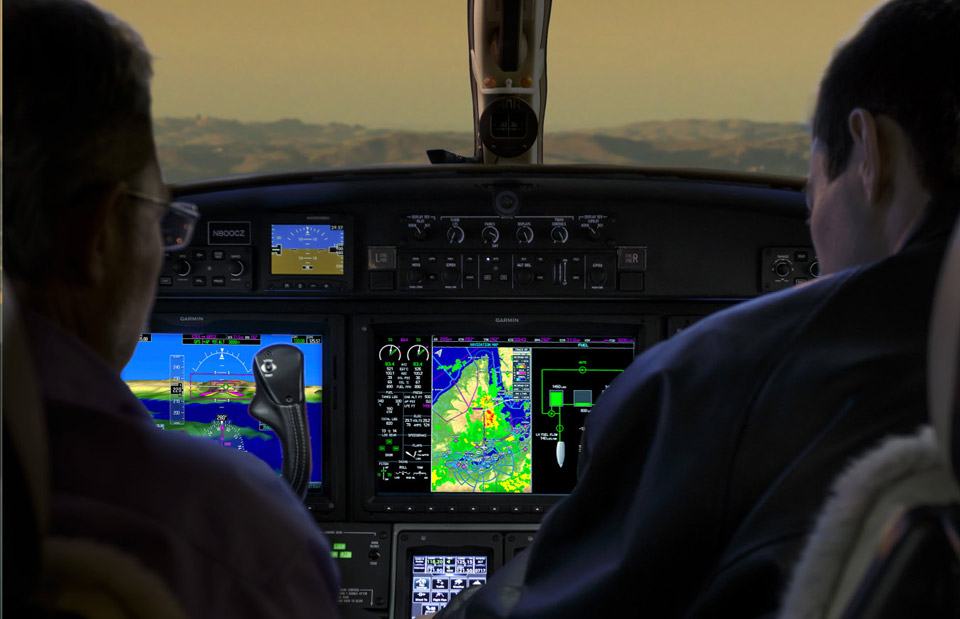
A winter storm had left more than a foot of powdery snow on the airport, which—while largely cleared off the taxiways and runways—made conditions for a first flight more unusual than normal. The brand-new M2 had been delivered by a Cessna pilot the week before, and the two new owners and I were to spend the next month putting it through its paces while they trained toward their type ratings. Reading manuals and flying a simulator are one thing, but there are always interesting lessons to be learned in operating a new airplane for the first time, especially when operating on real-life flights from point A to point B.
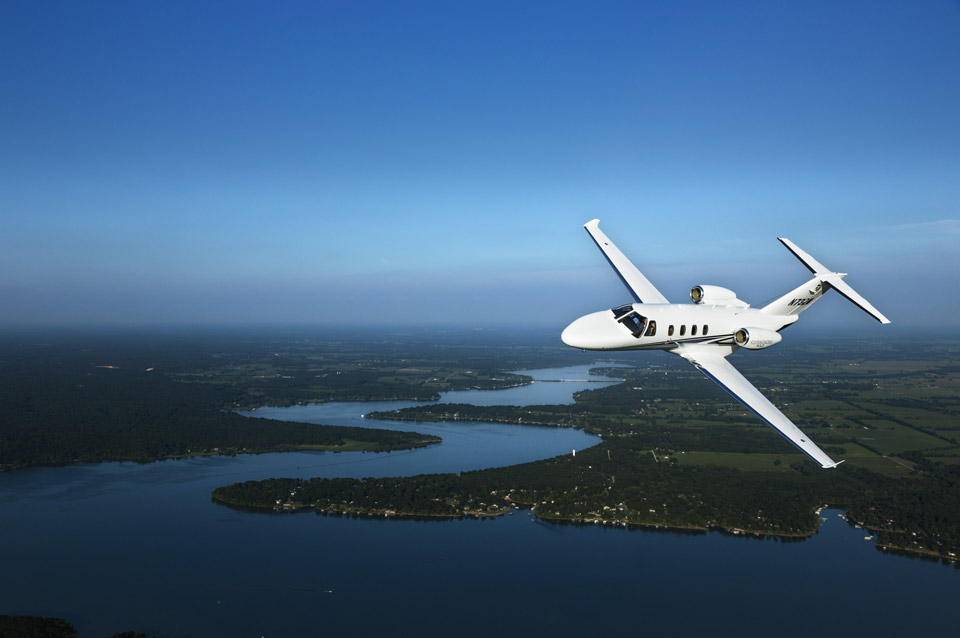
Loading the aircraft before departure required a little planning, as the center of gravity (CG) can be problematic. By removing the CJ1+’s rack-mounted avionics units from the forward nose area and replacing them with lighter Garmin avionics that reside mostly in the cockpit, the M2’s empty CG shifts pretty far aft.
One 180-pound pilot flying solo needs 140 pounds of ballast in the nose baggage compartment to just barely pull the CG inside the aft limit. Two 180-pounders still need about 20 pounds in the nose. Fortunately, Cessna delivered the aircraft with eight 20-pound ballast bags of sand, so getting the CG inside the envelope didn’t require scrounging up ballast from the FBO.
Starting the aircraft and getting under way, one impression that jumps out immediately is how little there is to do (besides fly the airplane) in the M2, especially relative to the CJs from which it was derived. Setting up pressurization, turning ignition and engine sync on or off, checking that antiskid is on prior to landing—these are just a few of the actions that have been completely automated in the M2. Even the navigation and beacon lights don’t require switches—following FAA guidance on best operating practices, the nav lights activate as soon as power is applied to the aircraft, while the beacon switches on as soon as an engine is started. As a result, the checklists and flows are more quickly accomplished relative to legacy CJs, leaving more time and brain power free for control and maintaining situational awareness.
The winter conditions gave the two new owners a quite pleasing taste of the M2’s climb performance. At low altitude with three occupants and a bit more than half tanks of fuel, we were seeing nearly 4,000 feet per minute in the dense air. The icing on the cake? The M2’s optimal climb speed is nearly double that of the heavy turboprop the new owners were transitioning from, all the while giving better rate of climb.
Descent and approach. After a very short en route phase to our first destination, flying a descent and approach with weather conditions quickly coming down as thunderstorms approached showed where the G3000’s split-screen ability really shines. On the MFD we displayed the SiriusXM Nexrad and lightning data on the left half of the screen, with the onboard radar pane smack against it on the right. Seeing the two juxtaposed allows for immediate correlation of data in a way that even aircraft with radar on the PFD and Nexrad on the MFD, such as the CJ1+, can’t provide.
Better yet, because the PFDs have the ability to each host their own pilot-selected pane, there’s never a need to switch away from the weather displays on the MFD. We could switch between the approach plate and moving map on the PFDs as needed, as well as separately turn on or off a flight plan inset window to monitor the FMS’s progression through the arrival and approach. All the information needed is head up on the three screens—there’s no need to look down at the touch controllers to proceed direct to a fix on the arrival, for example. Flying the M2 has been the first time I’ve felt like I could actually display all the information I want to see simultaneously in a cockpit, with no need for button pushing or knob turning to toggle displays.
We did receive one unpleasant surprise because, in part, of the added sophistication that the G3000 offers over the G1000. Assigned a clearance to cross an en route fix at 12,000 feet, I talked the pilot through inputting the crossing restriction into the flight plan, enabling the vertical navigation (VNAV) feature. Once the information was entered, however, the expected top-of-descent (TOD) symbol on the MFD did not appear; this prompted examination of the active VNAV leg page—which, while showing that the altitude constraint was entered properly and VNAV was engaged, was not computing a time to TOD as would be expected.
Beginning our descent using old-fashioned mental math, we poked around the VNAV entries in puzzlement until we finally realized the culprit. When entering the crossing altitude we had not noticed that the VNAV “phase” had defaulted to climb, rather than descent. Even though we had been in cruise for some time, and programmed an altitude well below our current altitude, we needed to tell the system to calculate the crossing as a descent; because it was expecting us to climb to an altitude beneath us, it essentially was telling us, “you can’t get there from here.” The G1000 does not support VNAV climbs, so this trap is new to the G3000 installs like the M2—which do support VNAV in climb—and is a reminder that with new capabilities come new responsibilities to fully understand the automation’s logic.
No surprises. In landing, the M2 shows no surprises for any pilot with prior Cessna 525-series time. The low, straight wing will float in ground effect if allowed to, but flown properly is quite predictable and docile. A huge plus for our winter flights is that the M2 shares the ground flap system found on the CJ1 through CJ3 (the CJ4 has a different system entirely). After touchdown the pilot moves the flap handle from the landing position (35 degrees) to the ground position (60 degrees), which creates a good bit of aerodynamic drag while simultaneously triggering speedbrake extension to add even more drag, putting the weight firmly on the wheels.
This ground flap setting—added to the fact that the M2’s hot wing (thermal anti-ice protection on the leading edge) means no speed additive is required to VREF in icing conditions—makes the airplane a great stopper in wintery conditions. On patchy snow we had the airplane stopped 3,000 feet down the runway; on a truly slick runway of rain and ice, we still stopped only 4,000 feet after crossing the threshold.
Besides some of the more obvious improvements, the first few days of flights in the M2 unveiled many small features that will put a smile on a new PIC. When the heading bug is moved, a dashed line on the MFD projects the heading to be flown over the moving map, a feature the G1000 lacked—and one that’s very useful in setting up for a visual pattern or maintaining situational awareness during vectors onto final approach.
The radar features a ground clutter suppression mode that, while not as sophisticated as the truly impressive radar in the CJ4, makes the radar easier to interpret than on prior Garmin flight decks. Even something as seemingly small as being able to set exact VNAV altitudes and approach minimums—rather than needing to round up to the nearest 100 or 10 feet, respectively—makes for a quicker workflow and more precise operation.
Big or small, the improvements represented in the M2 are nothing short of impressive. The overarching impression that kept returning to me was of an airplane combining an unprecedented level of avionics sophistication with extraordinarily simple systems operation and honest stick-and-rudder characteristics. Add to that best-in-class performance on takeoff, climb, and landing, and the M2 is quite simply a dream of an entry-level jet.
Neil singer is a Master CFI with more than 8,500 hours in 15 years of flying.
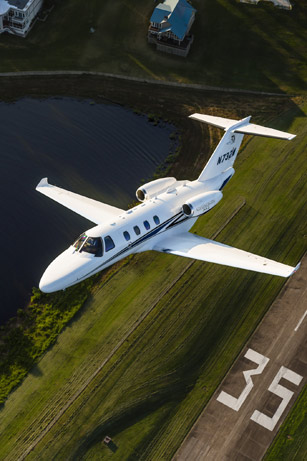
Courtesy Cessna
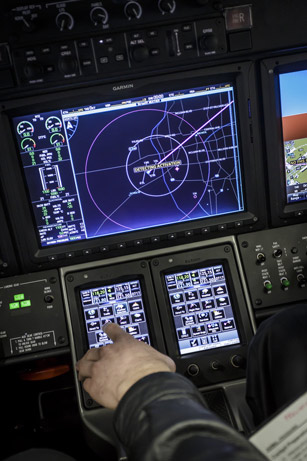
The M2’s Garmin G3000 avionics use dual touch screens for data entry. The multifunction display can be configured to show a single, large screen view (above) or a split-screen view showing two different sets of information. Either way, engine and systems information always appear on the MFD’s leftmost screen segment.
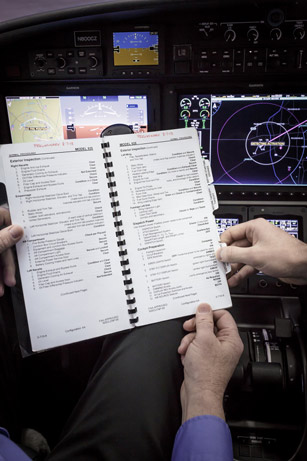
Although many of the M2’s systems function automatically, there’s still plenty of checklist items to review in each phase of flight. The author spent a month mentoring two new M2 owners.


